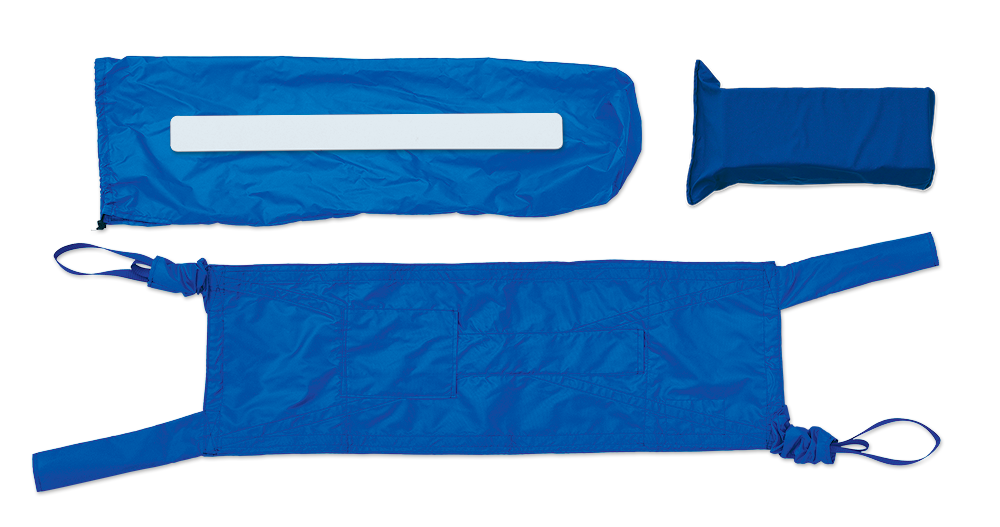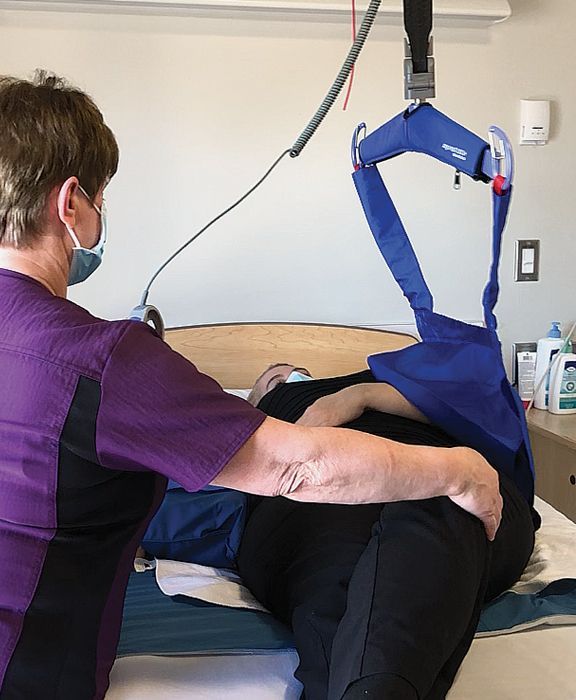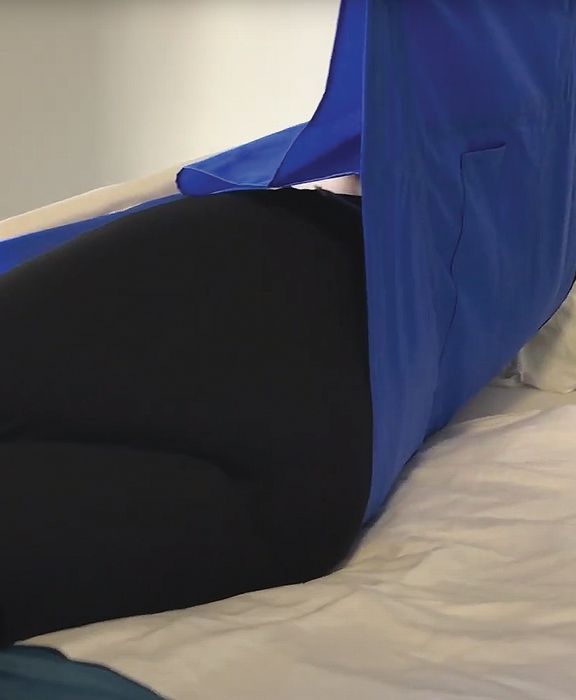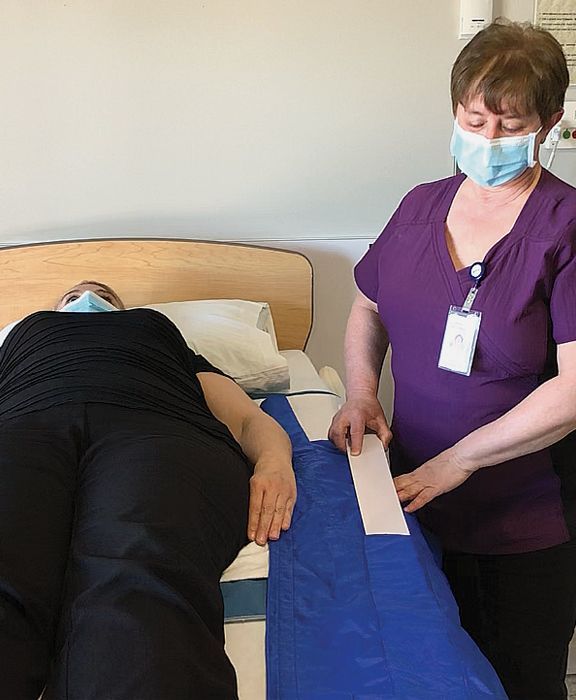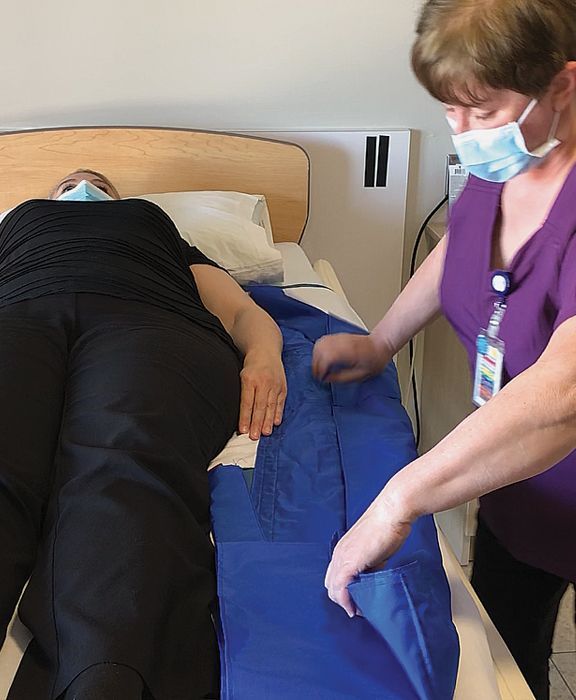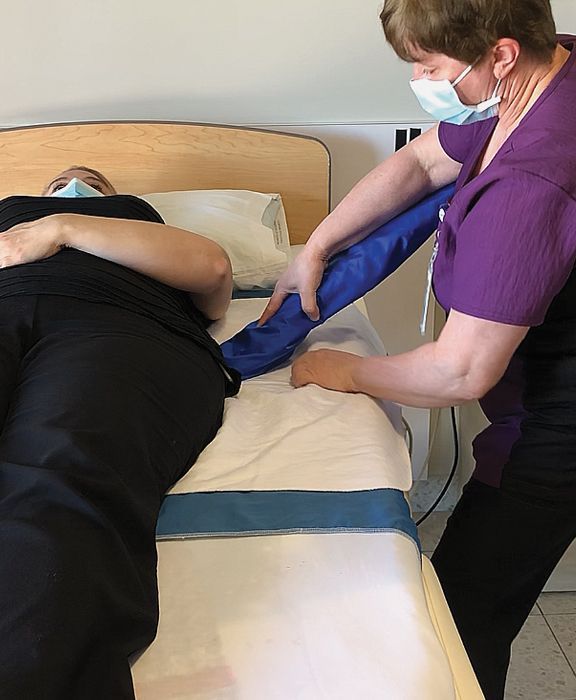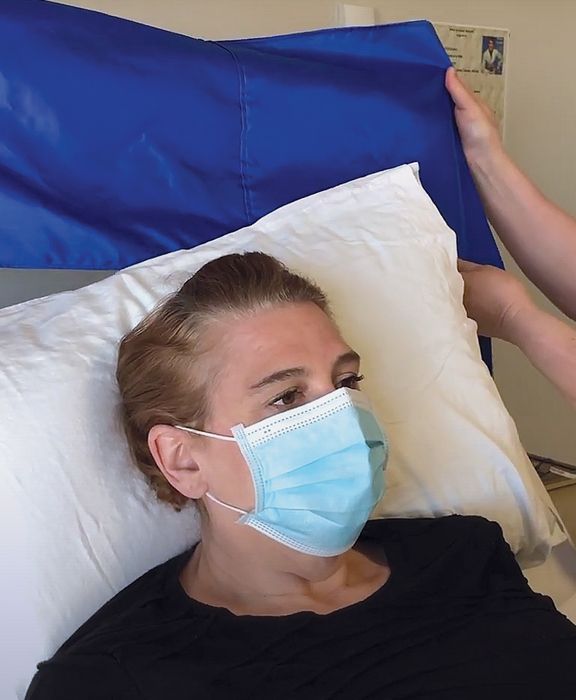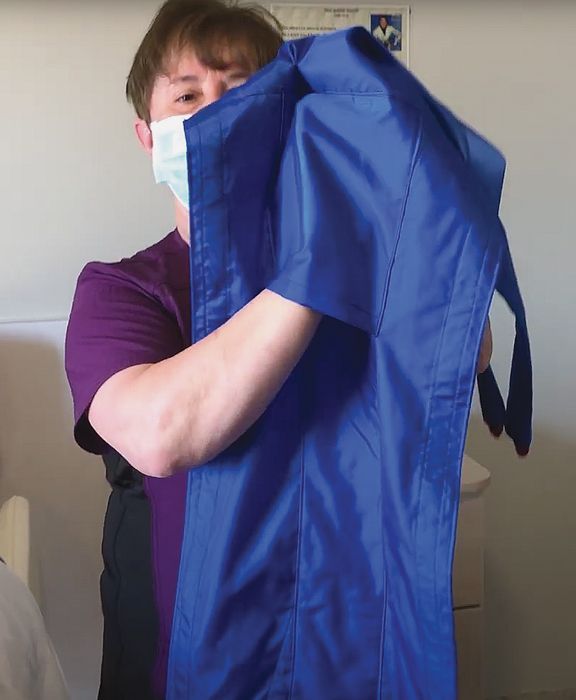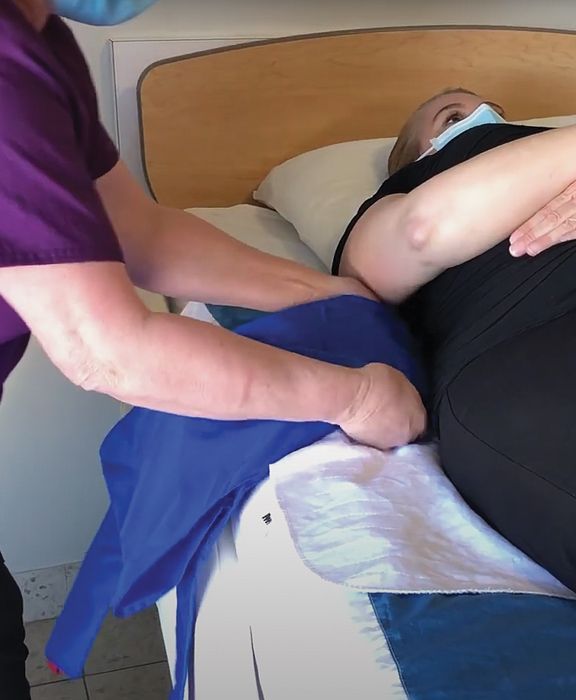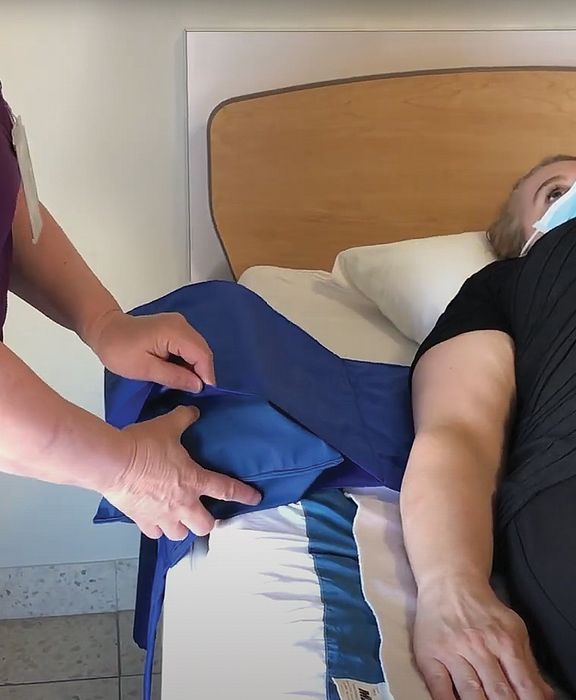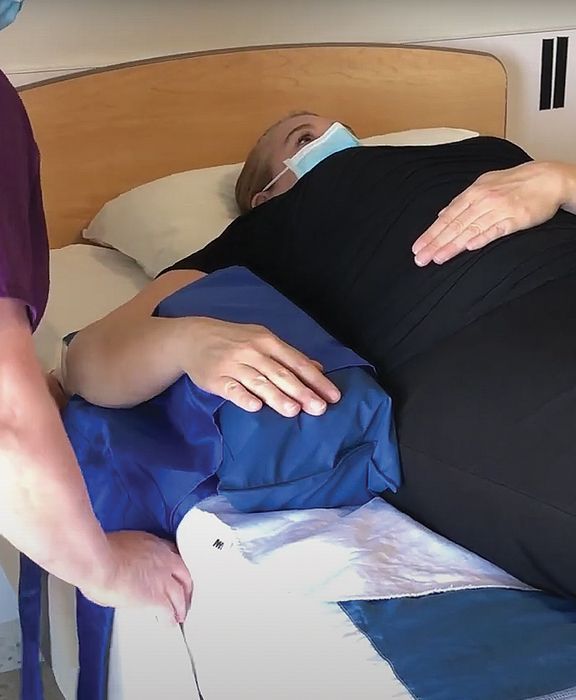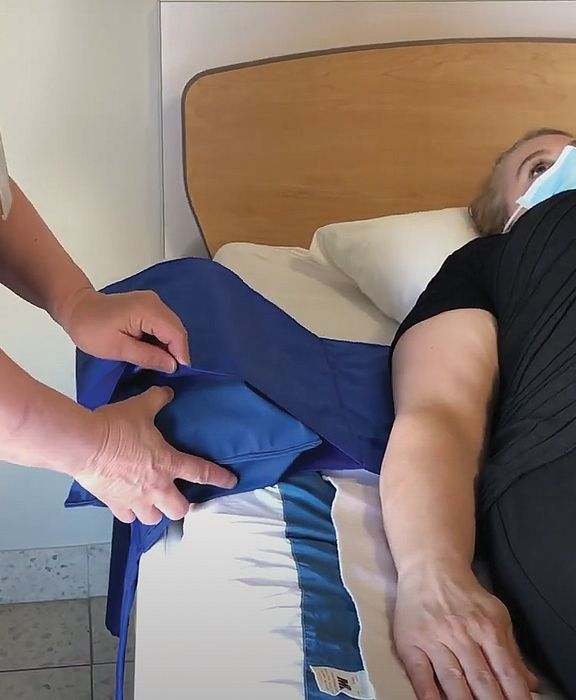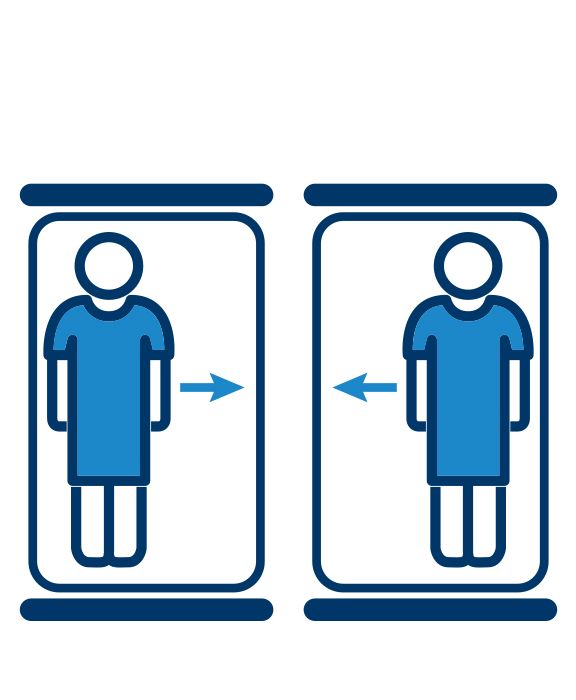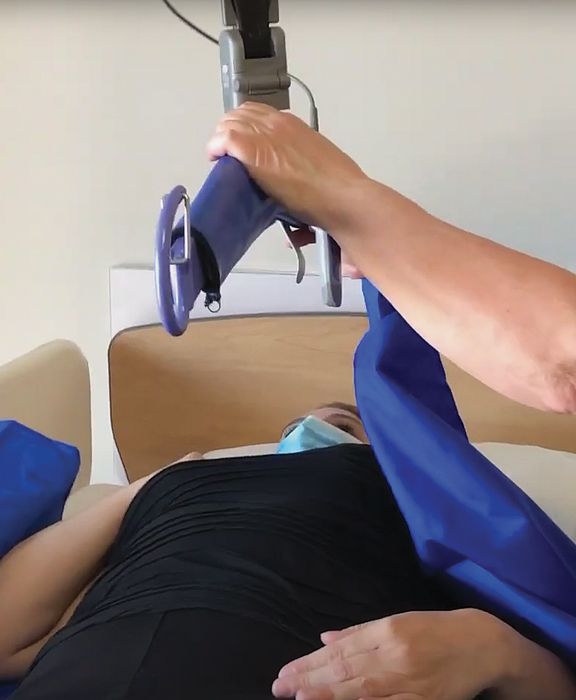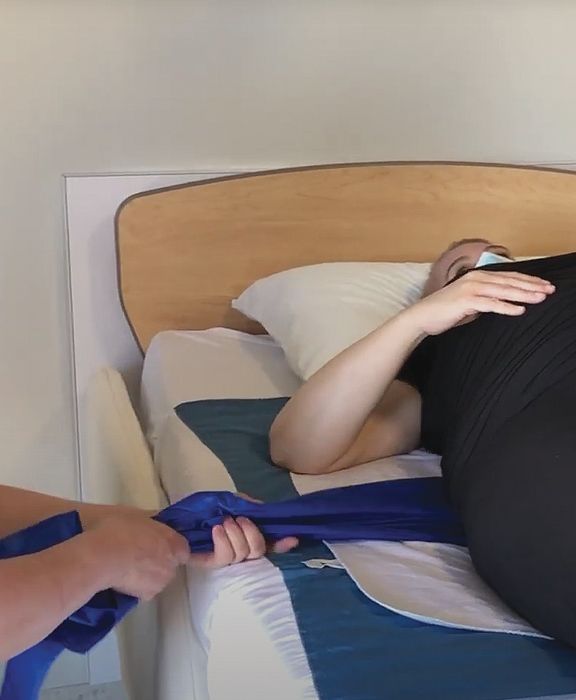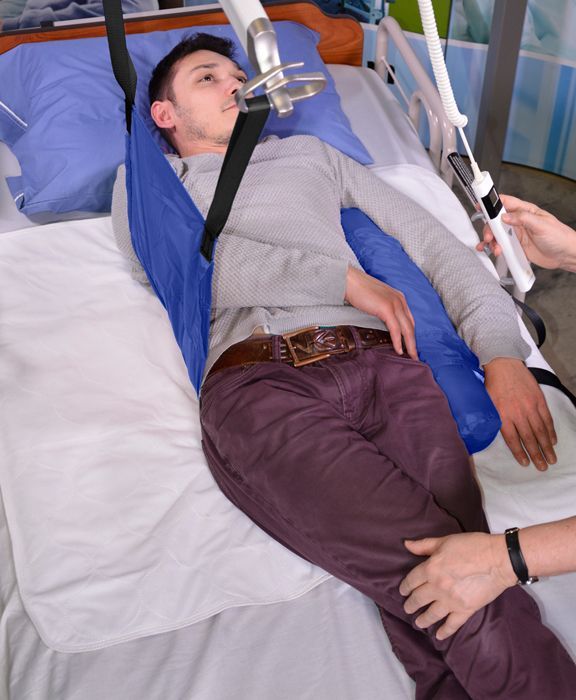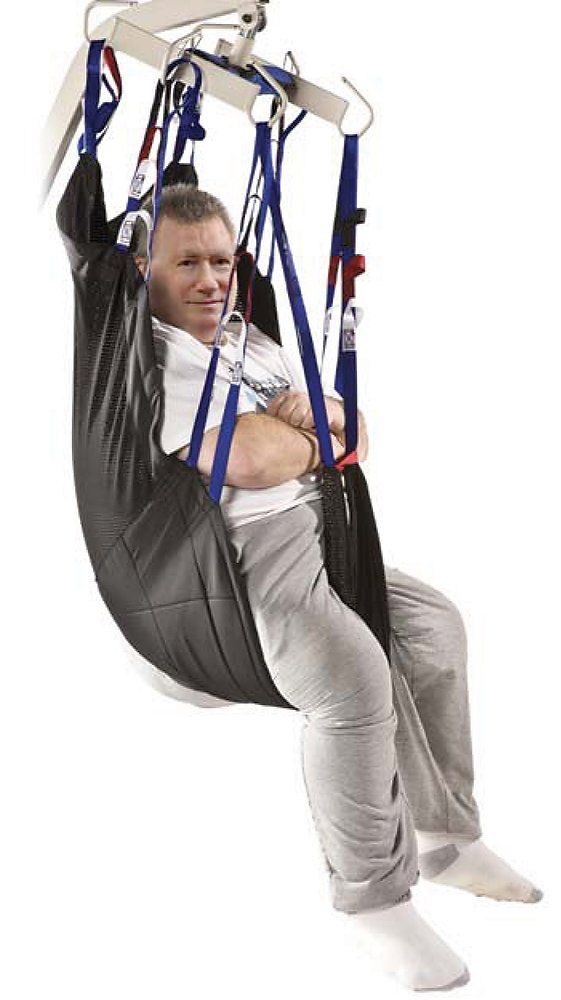City skyline
Patients suffering from dementia or other behavioral health problems make it ometimes difficult for caregivers to turn them and provide care.
Turning a patient manually may cause back or shoulder problems and may also risk an aggressive reaction from your client.
Birthday Sparks
This sling has been created to reduce the straining involved when turning a patient in order to perform the following procedures, it has a slippery finish for an easy an effortless installation.
• Changing a diaper
• Applying a bandage
• Working alone
Note: The Effortless turn sling is not for lifting, only for turning a patient.

